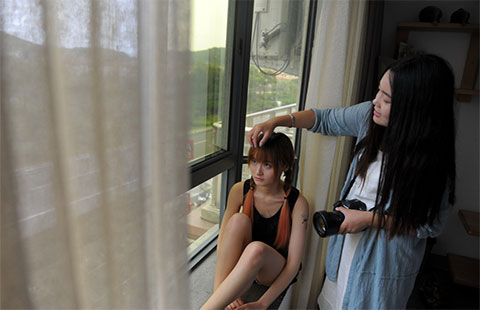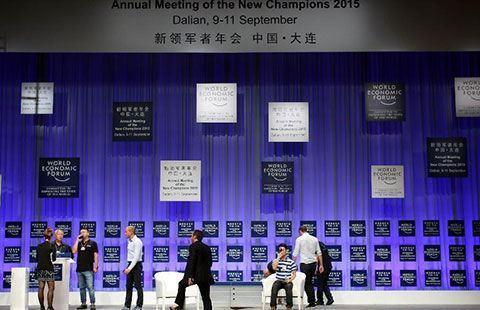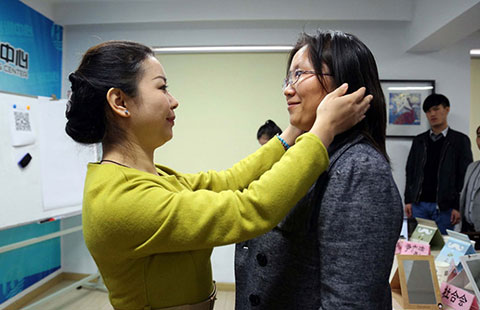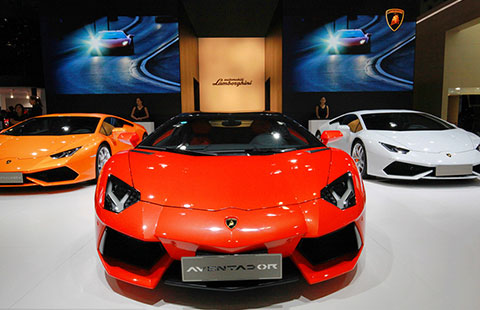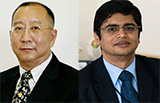Chinese influence still inspires ceramic artists
By Peng Yining (China Daily) Updated: 2015-08-24 08:15
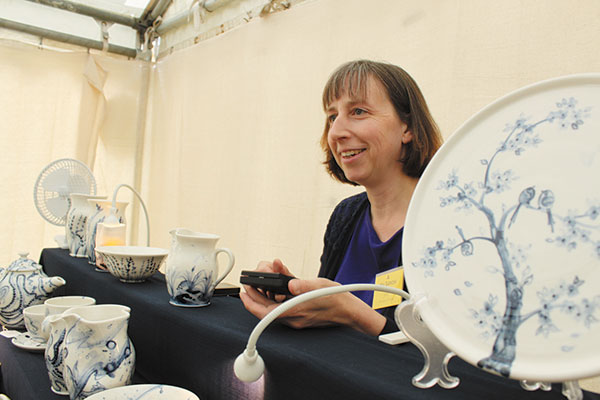 |
|
Mia Sarosi, a ceramics artist based in Oxfordshire, with her blue and white porcelain works at an exhibition. [Photo provided to China Daily] |
Wang Yuwei is studying for a master's degree in architecture and ceramics at University College, London. The 24-year-old student said teachers in the UK encourage experimental projects and the use of new materials.
She and two other Chinese students are working on making ceramic components with a robotic arm. They have adapted an arm, originally used to weld automobile parts, to squeeze out clay and make different-shaped coils.
"It is faster and more accurate. It's cutting-edge ceramic technology," Wang said. "I didn't know about this before I came to the UK. It's still very new in China."
Using digital technology doesn't mean rejecting craftsmanship, according to Guan Lee, Wang's tutor at the college.
"The technology helps us make shapes we can't make by hand. With digital tools, we can realize our designs," he said. "Many ceramics artists come to my studio to learn about different technologies, including 3-D printing."
In 2013-14, ceramics artist Mia Sarosi taught at a college in the UK. She said her students from China and other parts of Asia weren't used to working individually and expressing their ideas and opinions without reserve.
"They were more accustomed to being told what to do, so it was strange for them to have the opportunity to do whatever they wanted for their art projects," Sarosi said. "However, they all rose to the challenge. I gave them lots of opportunities to discover their individual interests. They all ended up with diversely different projects."
Li Wenying, manager of a private ceramics arts center in Jingdezhen, Jiangxi province, said China could learn a few lessons from the UK's education system.
"Most colleges, even primary schools, have ceramics classes. Galleries and ceramics events are very common. If you are interested, you can train as an artist from very young age," she said. "We don't have a similar culture in China."
When she visited the International Ceramics Festival held in Aberystwyth, Wales, she was impressed by the passion shown by the devotees.
"People were dancing, drinking and firing porcelain at the event. Artists were working together and exchanging ideas. It was like a big party for lovers of ceramics," she said. "We have a ceramics festival at Jingdezhen, but it's usually very formal and few artists participate."
Having worked with artists and galleries in the UK for more than 10 years, Li said most of them were passionate about what they were doing. By contrast, the potters in Jingdezhen follow the market instead of their hearts. "Now the wood-burning kiln is popular. Even an ordinary teacup fired by wood could be priced at more than 1,000 yuan ($155). Suddenly, there are wood-burning kilns everywhere in the city," she said.
- 2015 China International Fair for Investment and Trade kicks off in Xiamen
- China's commodity imports robust in Jan-Aug period
- China stocks rebound 2.92%
- 2015 China box office already past 2014 total
- China foreign trade decline widens in August
- Interview: JP Morgan's senior executive bullish on China
- Innovation, development the focus for NZ mayors
- Lives of freelancers

